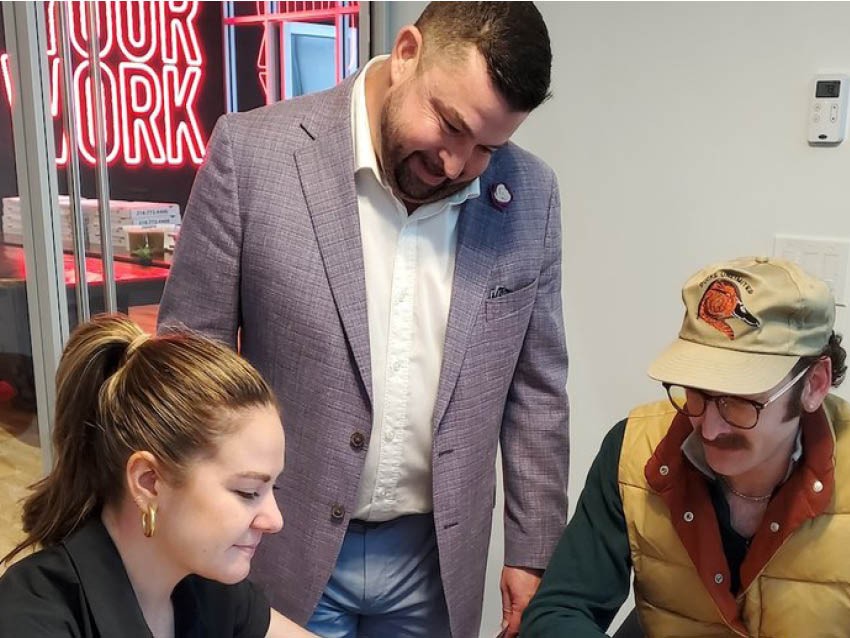Vocon Architects Embrace AI Tools, Boosting Design Process, Collaboration
This article is originally from the Cleveland Business Journal published May 15, 2025.
The use of artificial intelligence at Cleveland architectural design firm Vocon has changed a lot since the firm’s Technology Director, Brandon Dorsey, began looking into its potential uses and abuses four years ago.
Vocon’s professionals soon began to see the potential of AI as a tool that added to their architectural design work, not simply as a way to replace some tedious aspects of their jobs.
Now, the firm’s architects, designers and businesspeople are using multiple AI tools not only to help design buildings and interior spaces, but to juice collaboration and improve design workflow, documentation and code compliance.
“There are so many things to be excited about and look toward the opportunity that AI can bring if you just take a step back and see it and open your eyes to the possibilities,” Dorsey told the Cleveland Business Journal.
How does Vocon use AI now?
Vocon’s architects and designers in Cleveland and New York City typically start with team conversations during which they draw out ideas, concepts and plans for a project before plugging that information into their prompt-based modeling software, Emily Scheffler, one of the firm’s architects, told the Cleveland Business Journal.
The software’s text-to-image prompts help Vocon professionals explore a building’s characteristics, from how big it is, called “massing,” to how far back the building is set from the street, Bryan Daily, another Vocon architect, told the CBJ.
The professionals manipulate and refine the AI-produced models and then plug them into different AI generators to apply building materials — bricks, glass, wood siding — and convert them to life-like renderings that elicit client feedback, Daily said.
The modeling and design work is done with text prompts to AI-assisted software instead of with pencils and paper, said Dorsey.
“The fun part about that is we can update those prompts based on client feedback, he said. “So now we’re refining even more, and we’re ultimately getting to what I feel is a product that not only is what meets the client’s expectations, but is a more mindful, thoughtful design.”
AI Tools Produce Images much Faster
AI tools can spit out many times more design ideas than one architect or designer can within a given timeframe.
“Any creative industry [can] use generative AI to help ideate different solutions that would normally have taken an X factor to get to,” Dorsey said.
Coming up with five design options for a space may have historically taken one week, but a generative AI tool can “give me 50 options within a day,” he said.
This gives architects and designer the time to create more mindful and thoughtful designs, Dorsey said.
AI is part of Vocon’s Business Proposition
Over the last year, Vocon chose Evolve Labs as the provider of its AI-assisted software for designers.
“We started as a small beta user for them when they were coming to market,” Dorsey said. “We scaled from five users now up to 40 users, and that has a significant cost to it.”
“Vocon is investing in this as something very serious and … looking at this being a disruptor,” he said.
While the new AI software will cost 9% of the firm’s annual budget, it is worth it, Dorsey said.
“What we’ve seen is … that curiosity, that collaboration, everything that is happening with the tool,” which has different solutions for design creativity, construction automation, documentation and compliance, he said.
“It’s like these aha moments that the technology is presenting … then lead to other conversations that normally may not have happened,” Dorsey said.
